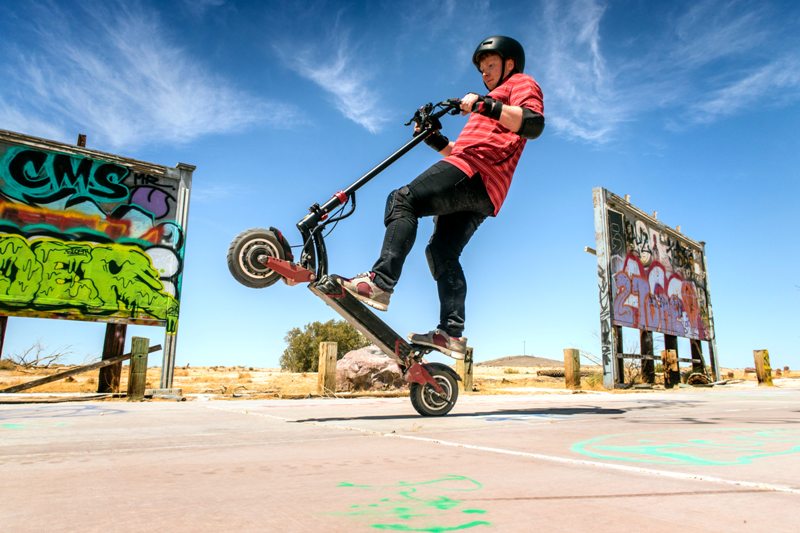The quantity of electric scooters on the roads is developing day to day. While the manual rendition was once the privy of small kids, the electric scooter is without a doubt for adults.
Progressions in innovation and material science developments, enhancements in ride solace and accommodation, and above all, awareness of the risks of environmental change have made ready for the rising prominence of these electric passenger vehicles throughout the last ten years.
Parts of Electric Scooter
An electric scooter consists of four primary components: a battery, motor, throttle, and controller. At the point when a rider twists the throttle on the handlebar, the controller responds by ordering the battery to send electric energy to the motor which is mounted on the center of the wheels.
This is only a fundamental outline of how electric scooters work. Every one of the electric scooters available comes in slight varieties, meaning they each work somewhat in an unexpected way.
In this way, to more readily comprehend how electric scooters work, we’ll have to independently investigate every part.
1. How Does Electric Scooter Battery Work?
The electric scooter battery is a crucial component that powers the scooter. When the rider twists the throttle, the controller sends a signal to the battery to release electric energy, which is then transferred to the motor.
The motor uses the energy to spin the gear, which in turn moves the wheels of the electric scooter forward.
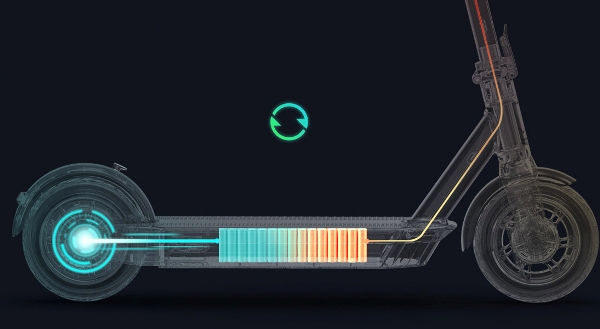
Electric scooters might accompany one of these three types of batteries:
- Nickel Metal Hydride
- Lead-acid
- Li-ion (Lithium-ion)
1. Nickel Metal Hydride (NiMH) Battery
A more established battery type, NiMH finds some kind of harmony between the far-reaching lead acid and the fresher lithium-ion. This battery holds a charge for longer than its lead-acid partners. In any case, the drawback is that it’s heavier than the
2. Lead Acid Battery
However, a piece bulky for general use, lead-acid batteries are the well-established pillar of gadgets that require battery-powered batteries since they are the least expensive and accessible. They are additionally the favored power hotspot for golf trucks and a few cars.
Furthermore, they are the most widely recognized battery in more established scooter models.
3. Lithium-ion Battery
Lithium-ion batteries are the freshest and most fitting battery types for electric scooters. In addition to the fact that they are more modest, lighter, and more eco-accommodating than the rest, they’re likewise more remarkable and hold a charge far longer than both the NiMH and lead-acid renditions.
In numerous ways, the advances in lithium-ion battery tech have helped drive electric bicycles and scooters into the spotlight. As a general rule, most scooters maximize at 12 to 15 miles on a solitary charge.
2. How Do Electric Scooter Motors Work?
Electric scooters use brushless DC motors, also known as BLDC motors, to power their wheels. These motors are more efficient and reliable than traditional brushed DC motors, making them a popular choice for electric scooters and other small electric vehicles.
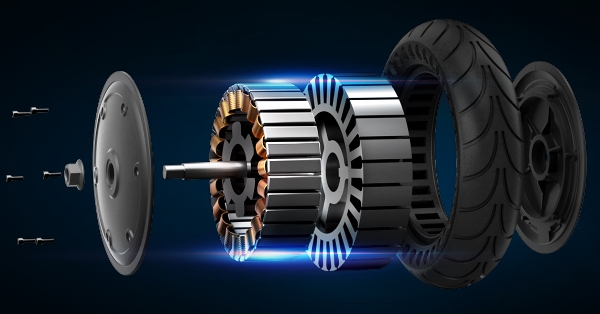
A BLDC motor consists of a stator, which is the stationary part of the motor, and a rotor, which is the rotating part. The stator contains a series of electromagnets, while the rotor contains a permanent magnet. When a current is applied to the electromagnets, they create a magnetic field that interacts with the magnetic field of the rotor, causing the rotor to rotate.
Types of Electric Scooter Motors
There are two fundamental sorts of motors utilized in electric scooters today, including brushed DC (direct flow) motors and brushless DC motors.
1. Brushed DC Motors
Brushed DC motors depend on a more established type of motor innovation that traces back to the 1800s. Brushed DC motors create power utilizing two arrangements of electromagnets. An enormous, tube-shaped mechanical brush hauls along a more modest magnet inside the motor, producing attractive fields that power different curl stages.
Accordingly, the motor turns ceaselessly and creates power. Brushed DC motors have an effectiveness of around 75-80%.
2. Brushless DC Motors
Otherwise called BLDC (brushless direct current) motors, brushless DC motors are a more present-day innovation that arose during the 1970s. Brushless motors are practically similar to a transformed form of brushed motors.
Accordingly, the attractive parts that move in brushed motors are the parts that are fixed in brushless motors. These motors utilize advanced changing hardware to drive various curls inside the motor on the other hand.
BDLC motors have an effectiveness of around 85-90%. They’re additionally more solid and have higher ability-to-weight proportions than their brushed equivalents.
3. How Does Electric Scooter Throttle Work?
In the least difficult terms, the throttle orders the scooter to advance at a specific speed. Squeezing the throttle conveys a message to the controller through cables. The controller then, at that point, educates the battery to deliver more capacity to the motor.
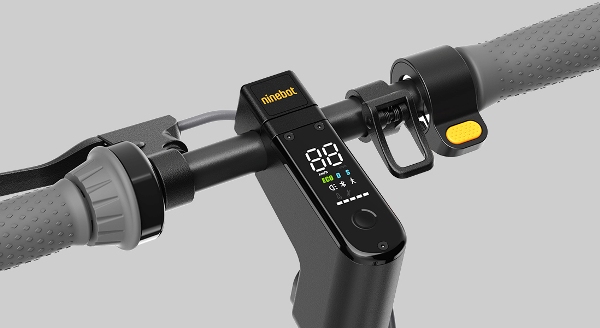
Lastly, the motor answers by driving the scooter forward. How quickly you need to go will completely rely upon how much tension you apply. Be that as it may, all things considered, throttles prove to be useful when you need to ride on a bumpy or raised landscape, voyage at various rates, or save the force of your battery.
The throttle likewise assumes a basic part while riding an electric scooter. Today, there are three fundamental sorts of throttles, including a twist throttle, finger (trigger) throttle, and thumb throttle.
1.Twist Throttle
A twist throttle speeds up the scooter when you hold and curve (or roll) the whole handgrip towards you. It expects that you utilize every one of your fingers and thumb. Be that as it may, if necessary, you can in any case utilize two or three fingers to hold and cover the brakes while speeding up.
2. Finger Throttle
The finger (trigger) throttle moves the scooter when you press the throttle down with a finger. This throttle makes it simpler to access and control most execution settings, including journey control, show splendor, regenerative slowing down strength, and so on.
3. Thumb Throttle
The thumb throttle speeds up the scooter when you press the throttle internally toward your palm. Of all throttle styles, the thumb throttle is the smoothest for regulating speed. You will find the thumb throttle across most section-level electric scooters.
4. How Does Electric Scooter Controller Work?
An electric scooter throttle works by controlling the speed of the scooter’s motor. The throttle is typically a hand-operated lever or thumb-activated button located on the handlebars of the scooter.
When the rider presses the throttle, it sends a signal to the scooter’s controller, which then determines the amount of power to send to the motor. This, in turn, determines the speed at which the scooter moves.
5. How Do Electric Scooter Brakes Work?
Electric scooter brakes are implied to guarantee the security of the rider. There are three fundamental sorts of electric scooter brakes, including a foot brake, mechanical brake, and electric brake.

1. Foot Brake
The back foot brake is the most fundamental sort of electric scooter slowing mechanism. To utilize this brake, press it against the back bumper with your foot to make grating and stop the scooter.
Generally, the foot brake is the most unreasonable approach to slowing down. Riders need to stir things up around the town bumper with their foot, frequently without thinking back.
2. Mechanical Brake
Mechanical brakes have been around for quite a while and are a believed sort of electric scooter brakes. A mechanical slowing mechanism can have either a circle brake or a pressure-driven brake.
Scooters with this slowing mechanism generally accompany a switch on the left handle. Riders need to squeeze this switch to initiate the plate brake on either the back tire, front wheel, or both.
3. Electric Brake
An electric brake is one of the most progressive stopping mechanisms that anyone could hope to find on electric scooters. It prevents the motor from creating any development. Besides, this slowing mechanism can utilize regenerative slowing down during the ride.
This means it sends power back to the battery each time it’s enacted. It’s critical to get an electric scooter with every one of the three brake types. A mix of plate brakes and electric brakes is incredible about somewhere safe.
6. How Do Electric Scooter Wheels Work?
The electric scooter wheels impact the foothold, slowing down execution, and less significantly, ride quality. Preferably, they are your association with the street. There are two famous sorts of electric scooter wheels: strong and pneumatic (air-filled).
1. Solid Tires
Electric scooters with strong tires are resistant to cut and liberated from mileage. You can ride certainly without stressing over punctured tires. Their disadvantage is that they can cause a shakier and bumpier ride, particularly if the scooter does have great suspension.
2. Pneumatic Tires (Air Filled)
Pneumatic tires are something contrary to strong tires they can go level occasionally and should be siphoned. On the potential gain, air-filled tires pad the effects of street defects to give a more agreeable ride, regardless of a suspension framework.
Besides, air-filled tires have a few strings and examples which give more grinding against the ground. You can anticipate that these tires should perform well in antagonistic street conditions.
7. Electric Scooter Suspension
The suspension in an electric scooter works equivalent to that in a motor vehicle or scooter. The suspension framework assists with housing unfortunate obstacles to further develop solace and ride quality. Electric scooters can have one of three kinds of suspension frameworks: spring, elastic, and pressure-driven or air cylinder suspension.

The fact that combines spring and the cylinder makes the best suspension one. This mix is brought curl over-air or loop over-pressure driven. Numerous electric scooters that have enormous pneumatic tires will more often than not swear off the suspension framework.
Enormous air-filled tires give preferred solace and ride quality over modest spring suspensions.
8. Electric Scooter Handlebars
The handlebars in an electric scooter help you turn and steer the scooter in any way you need. Great handlebars will for the most part have elastic or silicone covers on their edges, where the rider can hold them.
These covers ought not to be elusive to guarantee serious areas of strength and make your ride safe.
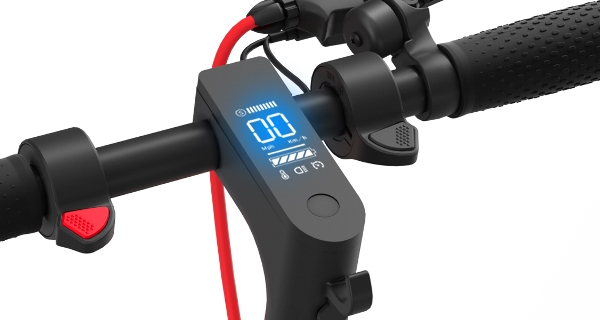
In addition, the handlebars in elite execution scooters are customizable. You ought to have the option to modify the handlebar to accommodate your level.
Simultaneously, the handlebars will have an adjustable component for when you need to make transport and store the scooter. An underlying adjustable system decreases the width of the scooter to a versatile size.
In most electric scooters, the handlebars will likewise come fitted with all controls, including the throttle button (on the right), brake switch (on the left), speed/show settings, power buttons, and so on.
9. Electric Scooter Frame
An electric scooter outline is the primary part that keeps all parts intact. It tends to be made of various materials like aluminum, steel, or carbon fiber. A few electric scooters can accompany an extra seat, which is perfect for when you need to rest while riding.
Conclusion
Electric Scooters are a convenient and Eco-friendly mode of transportation that has seen significant advancements in technology and performance over the years. With improvements in batteries, motors, and throttle controls, electric scooters are quickly becoming a popular alternative to traditional modes of transportation.
About the Author

Seba K
Hi, I m Seba and I am the author of this blog.
Electric scooters have been my passion since I bought my first one back in 2016.
Since then, I have experimented with numerous models and gained a wealth of knowledge about electric scooters.
I always keep myself updated with the latest product releases and advancements in this field.
I am delighted to share my experiences and insights with you here.
My background includes a degree in Avia Engineering, and I have a keen interest in outdoor sports and traveling.

